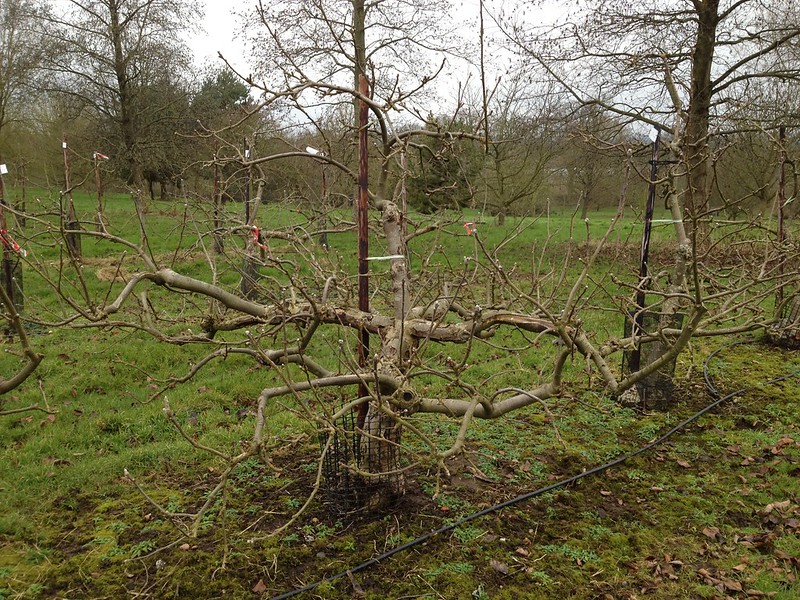 |
| Mature spindles |
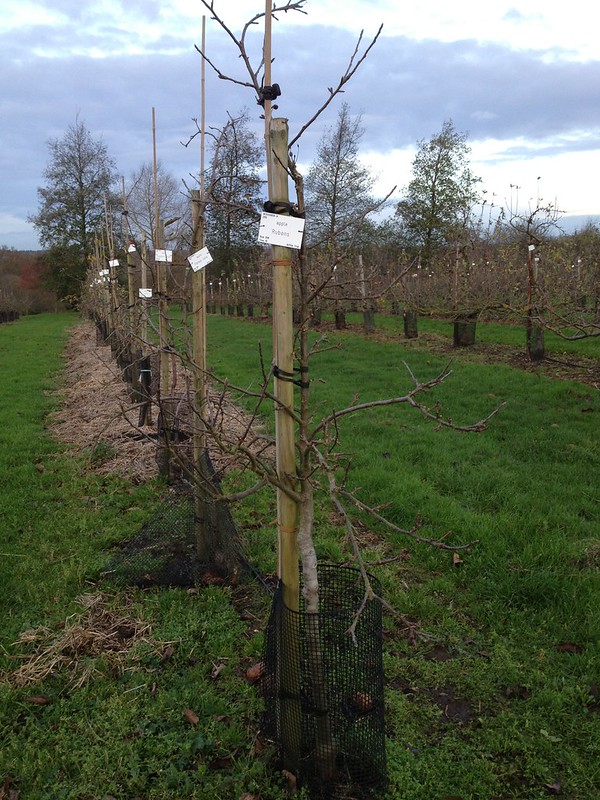 |
| A row of young spindles |
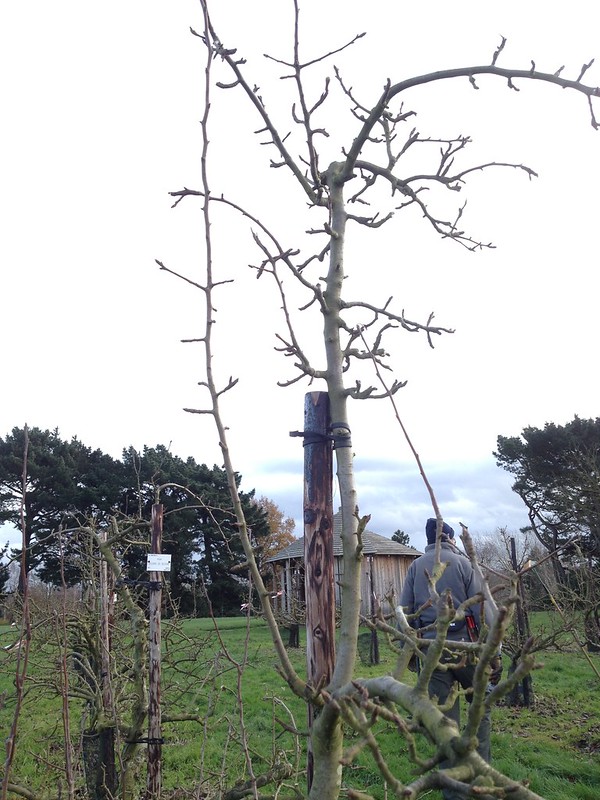 |
| A kinky leader; on the side, a vertical branch |
Spindlebushes. A kinky leader at the top, not a permanent one; a layer of branches, slightly above the
horizontal at the bottom (not the very bottom, about 75 cm), with a gap in the middle.
This shape is widely used in commercial growing of apples and pears, having been perfected by the Dutch in the 50s-70s. It is the shape a seedling starts off in life, and was originally conceived in the middle ages in France - that's how we were introduced to it today, third day of training.
I'm not a fan of restricted forms of tree (which became popular once we stopped having grazing animals in orchards), as I quite like to see trees in their full glorious shape. But there are sound horticultural and business reasons to choose this shape (although the latest shape is double leaders, to reduce pruning time/costs), which usually requires (semi-)dwarfing rootstock. For apples MM106 does not die easily and crops well in early yrs, but then becomes overvigorous, so M9 may be better.
As the shape is light, fruit is easy to pick and you don't need a ladder to prune it; the low-angled branches lead to earlier cropping (it has to do with the flow of sap, and with the sunshine reaching the fruits), and you can plant the trees closer so you get more cropping per area (rowscan be as close as 4 m even though we have trees planted at 4.5 m in the orchard, to allow for easier walking of the visitors and tractor space).
Formative pruning
A spindle starts off as a feathered maiden, whose framework of branches are aligned as a diagonal cross to the others down the row. Bending is done in the spring, as branches may break, stiffer as they are in the cold, and they do not set into position until they start growing anyway.
To keep the branches down - for a maximum of 6 weeks - one can use hop screws, or W clips, or even cute little bright-coloured (for maximum visibility) weights on the branches (the drawback of these being that the branches wave about).
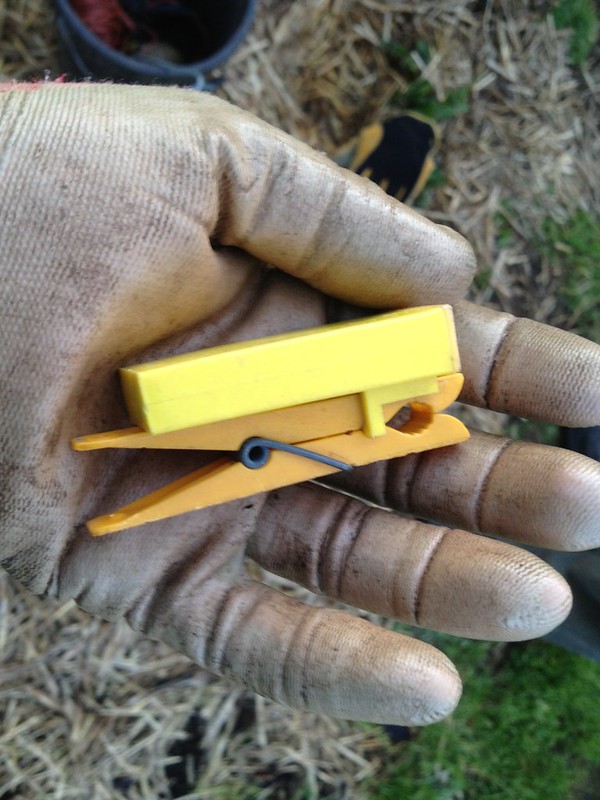 |
| A branch weight |
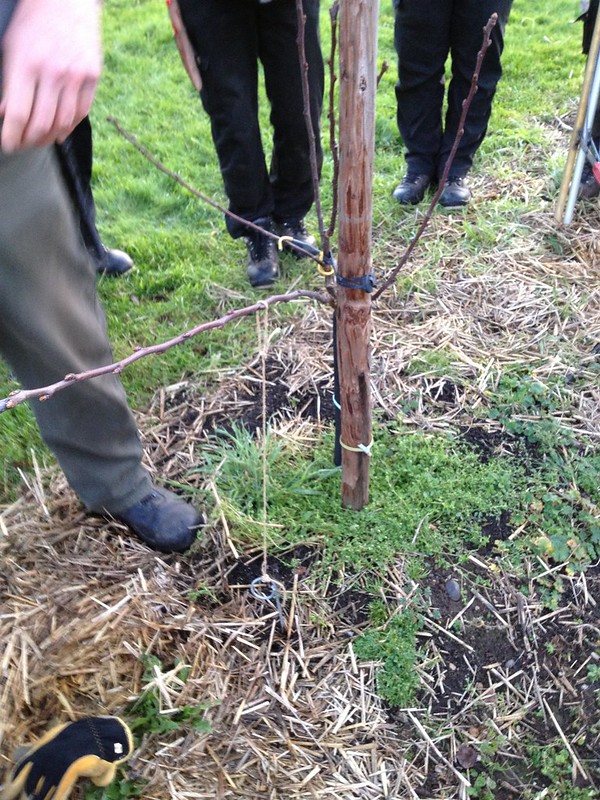 |
| Hop screw and W clip demonstration |
The central leader, which is meant to be kinky to keep the vigour in check, is usually pruned to 10 cm above the uppermost feather, which is rather counterintuitive; sideshoots are tipped to 3 buds down if too vigorous or weak.
Regulatory and renovation pruning
Pruning of the spindles goes by the general principles, with these additions:
- you need a bare area between the leader and the "skirt" (my term) of branches, to let air and light in; keepp only spurs and short branches on the main stem
- the "skirt" needs to be rather flat: you don't want a peak in it by cutting a branch going up so that then it goes down
- spurs grow on 2nd year old wood and older; you need to keep some of the new wood otherwise you won't have enough fruit in 2 years' time; much of the new wood grows upright: pears will fruit on vertical shoots, but they are generally cut or bent anyway
- if you don't get enough new growth, or nothing is suitably placed, you still need to get some replacement wood. To do this, you use a special slanted cut, D shaped: a "Dutch cut". Instead of cutting flush to the branch, you cut at a slant, leaving enough room on the side that you want a new branch for shoot hopefully to come out from the base. You never do Dutch cuts at the tip of a branch, or on the upperside of a branch; only in the middle and on the side
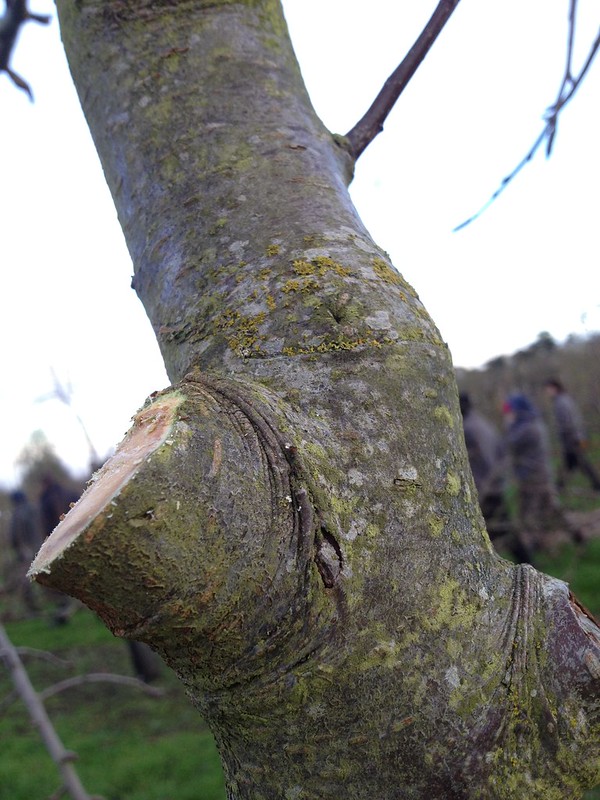 |
| A Dutch cut |
 |
| Shoot on a successful Dutch cut |
- if new growth is suitably placed to be trained as replacement, you may tuck it in under another branch to remember the branch needs tying down in the spring.
- in some places, they tie up as well as down, but not here
- the leader needs replacing every so often (when too heavy and old) so keep in mind you need a replacement for it as well. But if it is too vigorous, it's best left and cut back in June rather than in the winter; remember: summer pruning restrict grows, winter pruning stimulates growth
- by the principle above, sometimes strong verticals are pruned out on vigorous spindles in late July/August
Bourses
Bourses, a French term for bags. It refers to shoots that grow elongated and swell up at the base of a flower cluster. They occur, depending largely on cultivars, on both apples and pears and are no particular issue, except for the fact that they may be prone to canker, in which case they need to be cut out.
 | |
| Bourses affected by canker | |

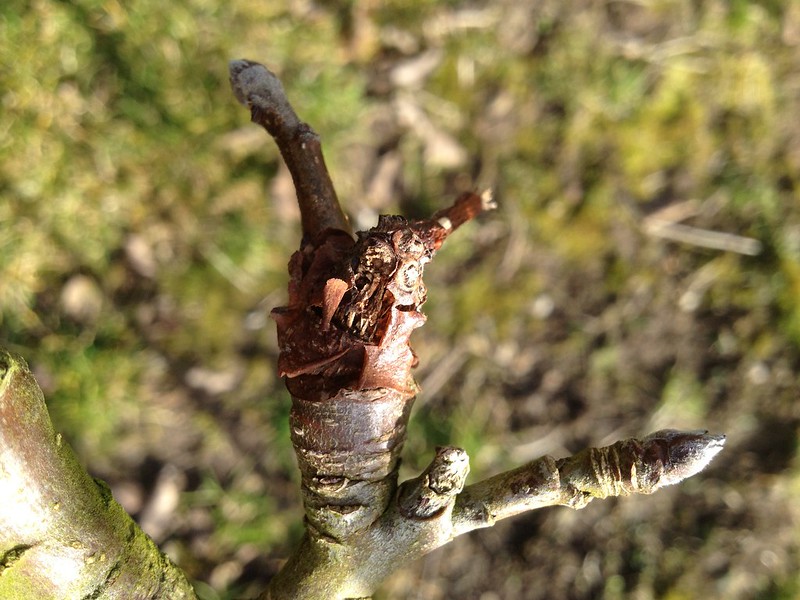
No comments:
Post a Comment